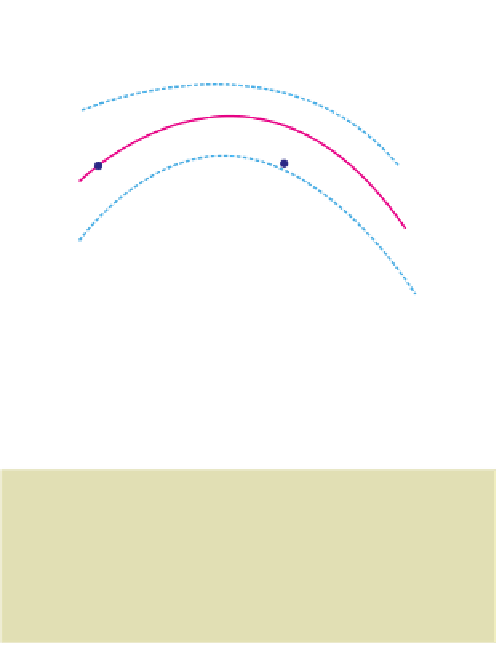Biology Reference
In-Depth Information
suffered too, because although their foster parents
continued to feed them, this did not compensate for the
high levels of energy expended during begging. In
canaries, therefore, coadaptation leads to a
resolution of parent-offspring conflict where offspring
will pay a price if they attempt to demand more
resources than parents plan to provide.
1.4
1.2
1
Brood parasites
0.8
Some species of birds, fish and insects are brood
parasites; they lay their eggs in the nests of other (host)
species and trick the hosts into providing all the
parental care. In theory, parasitic offspring should
behave exceptionally selfishly because they are
unrelated to the host parents and host offspring. As
predicted, parasite offspring provide what Darwin
(1859) called some of the most 'strange and odious
instincts' in nature. Their extreme selfishness also
provides new insights into the evolution of parent-
offspring interactions.
In some species of parasitic cuckoos (e.g. the
common cuckoo,
Cuculus canorus
), the female cuckoo
lays one egg per host nest and soon after hatching the
young cuckoo chick ejects all the host eggs (and any
newly-hatched host young) by balancing them on its
back, one by one, and heaving them over the rim of the nest (Chapter 4; Fig. 4.19).
Young parasitic honeyguides,
Indicator spp
, dispose of the host young by stabbing
them to death using sharp-bill hooks. The dead host nestlings are then either trampled
into the nest lining or removed by the host parents (Spottiswoode & Koorevaar,
2012). Caterpillars of large blue butterflies (genus
Maculinea
) secrete cuticular
hydrocarbons that mimic those made by
Myrmica
ants. This tricks the worker ants
into taking the caterpillar into their nest where, depending on the species of butterfly,
it is either a predator (devouring ant larvae or pupae) or a cuckoo (begging like ant
larvae to claim regurgitated food from the worker ants; Thomas & Settele, 2004). In
one parasitic large blue butterfly,
Maculinea rebeli
, the caterpillar gets treated like
royalty by mimicking the sounds of queen ants. This induces the worker ants to kill
and feed their own brood to the parasite if food is scarce (Barbero
et al
., 2009).
In the last section, we saw how parents might avoid over-exploitation by their own
young. This suggests that parasite offspring might not always get an easy ride when they
attempt to extract extra resources from the host parents. A comparison between the
begging behaviour of parasitic cowbirds and cuckoos reveals some of the trade-offs faced
by a young parasite. The brown-headed cowbird,
Molothrus ater
, is a parasitic bird,
widespread throughout North America. In contrast to many cuckoos and honeyguides,
the young cowbird tolerates the company of the host young. Why? One hypothesis is that
the collective begging of a brood evokes a higher total level of provisioning, which the
0.6
0.4
-15
-10
-5
0
5
10
Difference in begging intensity
between foreign and focal broods
Fig. 8.12
Cross-fostering experiments with
canaries. The growth rate of a foreign brood is
greatest when its begging levels match those that
the parents expected from their own (focal) brood.
From Hinde
et al
. 2010. Reprinted with permission
from AAAS.
Tricking the host
species into
raising the brood
parasite's
offspring
Sometimes it may
pay a parasite
chick to tolerate
host young


























































